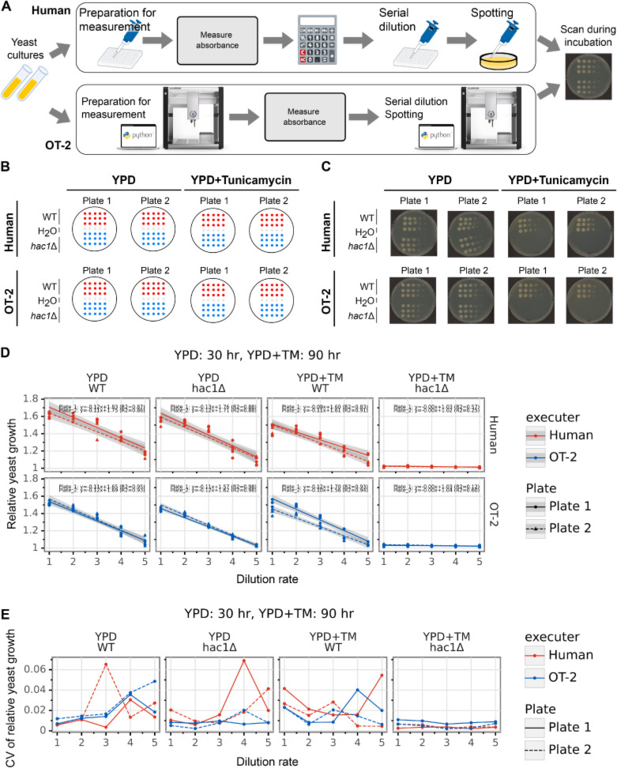・To make reproducible spot assay experiments widely available, we have automated the plate-based yeast spot assay of budding yeast using Opentrons OT-2, an affordable liquid-handling robot, and a flatbed scanner.
・Our proposed method can perform the entire process including the dilution series preparation, spotting, and continuous observation of yeast growth, contributing to improved reproducibility of experimental manipulations, reduction of human errors, and traceability of results.
・This research is expected to contribute to the promotion of decentralized laboratory automation by lowering the barrier to entry for laboratory automation in a broad range of wet labs.
Abstract
To make reproducible spot assay experiments widely available, we proposed an affordable method for automating yeast spot assays based on Petri dish agar plates using the Opentrons OT-2 (OT-2; Opentrons Labworks Inc., New York, USA) and a flatbed scanner (GT-X980; Seiko Epson Corp., Japan) . We prepared a 3D-printed mount for the Petri dish to allow for precise placement of the Petri dish inside the OT-2. To account for the uneven height of the agar plates, which were made by human hands, we devised a method to adjust the z-position of the pipette tips based on the weight of each agar plate. During the incubation of the agar plates, a flatbed scanner was used to automatically take images of the agar plates over time, allowing researchers to quantify and compare the cell density within the spots at optimal time points a posteriori. Furthermore, the accuracy of the newly developed automated spot assay was verified by performing spot assays with human experimenters and the OT-2 and quantifying the yeast-grown area of the spots. The results indicate that no differences were observed between the experimental results of the human experimenter and the automated system.
Benefit
Automation system of the spot assay experiments with high customizability for end-users at an affordable price.
Market Application
The affordable yeast spot assay automation system that was proposed in this study can be used, not only in yeast genetic and stress response research but also in synthetic biology, which is expected to develop substantially in the future. Moreover, since the OT-2 hardware and software are open source and can be controlled by Python, a popular programming language for AI development, our poposed system is expected to be easily integrated into future AI-drivin autonomous experiment system.
Publications
https://www.sciencedirect.com/science/article/pii/S2472630322051871?via%3Dihub


